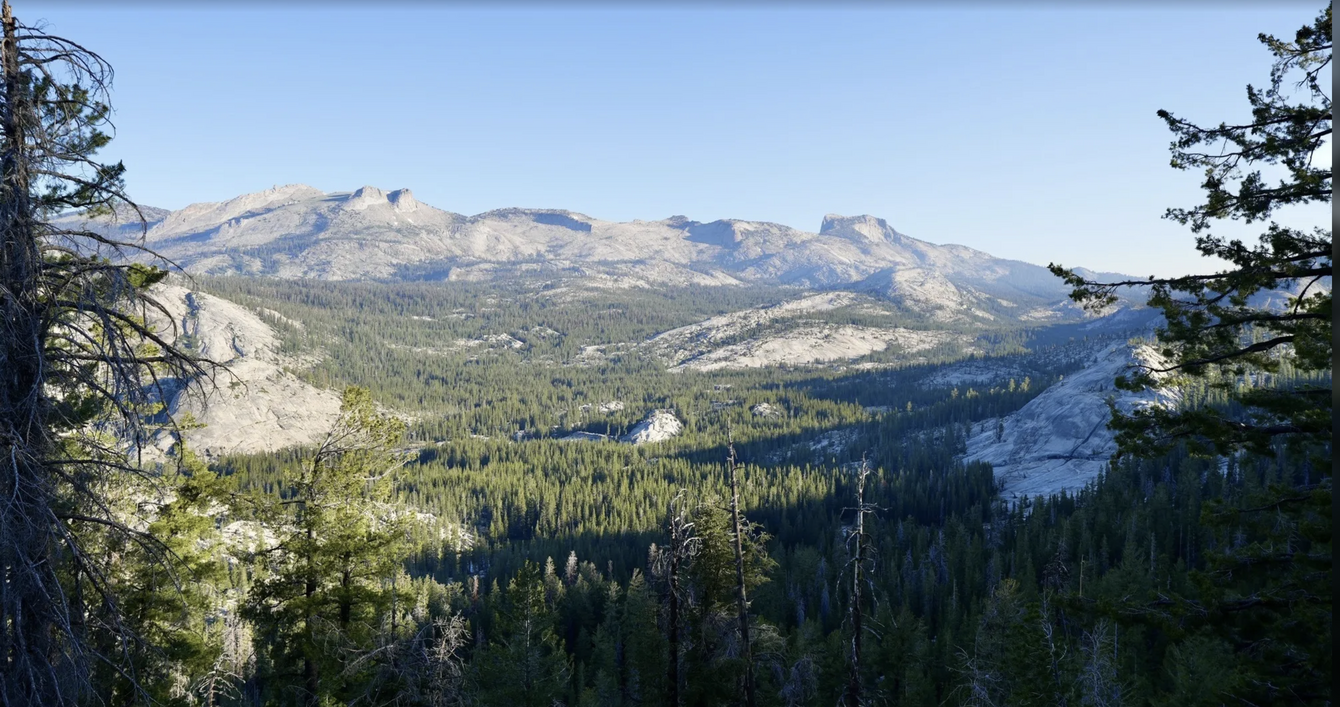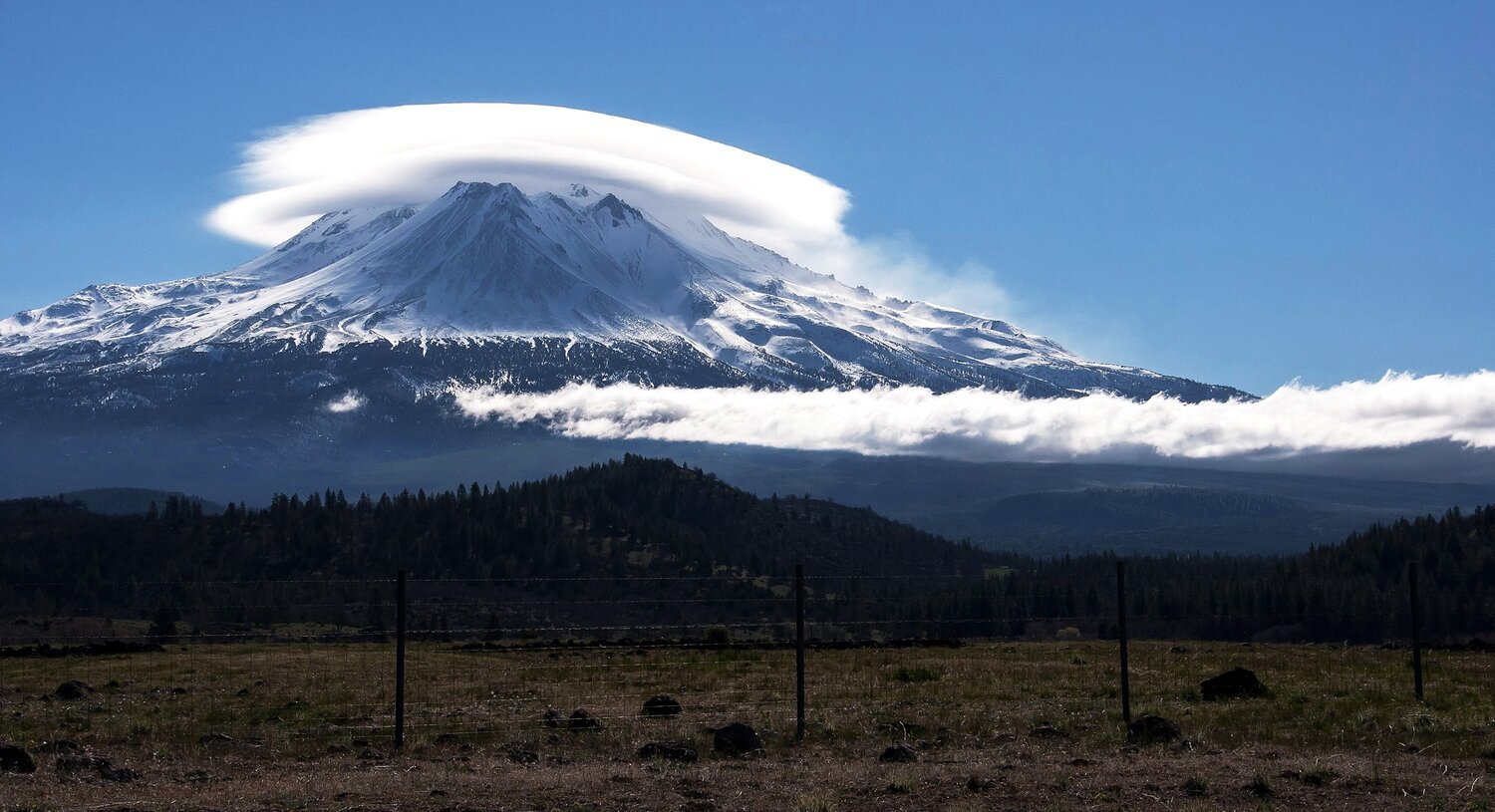
Questions and Answers
Your questions answered on Mysterious Disappearances and Deaths in the Wilderness
Why are people disappearing in the wilderness?
Background to Wilderness disappearances around the world
Revised November 2024
National parks and wilderness disappearances have always been dynamic and controversial subjects. Some dismiss the disappearances in places like Yosemite and Crater Lake National Parks as either accidents or foul play by criminals or serial killers. Other writers and broadcasters, like Coast-to-Coast, have put forward theories that there are clusters of disappearances and missing people that are most probably linked to supernatural or cryptozoological explanations.
Some disappearances are inevitably hard to explain on rational scientific grounds despite intense scrutiny of the facts, and the StrangeOutdoors Mysterious Stories Blog features many of these.
The USA and Canada remain the hotspots for unexplained disappearances, although Australia and Europe also have stories but in much, much smaller numbers. Countries with vast expanses of the backcountry, off the beaten path, certainly seem to contain the weirdest stories, and California, in particular, has a considerable number of incidents.
Specific stories on StrangeOutdoors defy logical explanations unless facts have been twisted or lost over the years.
Disappearances - David Paulides and the Missing411
According to NamUS, around 1 in 10 people are never found when missing. The National Missing and Unidentified Persons System is a national clearinghouse and resource center for missing, unidentified, and unclaimed person cases throughout the United States.
The numbers disappearing in National Parks is a big question. Some commentators like David Paulides, author of the Missing411 and Big Foot Wild Men and Giants Books, believe there are at least 1600 suspicious disappearances. Since he is the founder of the “North American Bigfoot Search” and author of various Bigfoot books, it would be assumed that Paulides leans to a cryptozoological explanation for disappearances, even though he refuses to give a direct answer for the causes of missing person clusters, despite authoring a series of Missing411 books and repeated attempts in various interviews over the years to clarify his hypothesis.
David Paulides, Author Missing 411 books
He has speculated that the National Park Service in the US is concealing data on how and where people disappear and how many have been found because it would cause a PR disaster and deter visitors. Whether this conspiracy exists is a matter of debate. One view is that attempts to acquire information regarding missing people are blocked by bureaucratic red tape, often accompanied by demands for high admin fees. The counter view is that rather than a deliberate attempt to conceal disappearances, the lack of a public database is probably caused by limited funds and Federal government bureaucracy. The truth probably lies somewhere between.
As of November 18, 2020, a petition by Heidi Steetman to “Make the Department of the Interior accountable for persons missing in our National Parks & Forests” has reached 11,183 supporters out of a goal of 12,000. Link to Petition. Streetman is an affiliate faculty member at Denver’s Regis University.
Currently, there is no centralized registry or database of persons missing in U.S. national parks and forests or on Bureau of Land Management lands. The petition is demanding that a national, publicly accessible registry/database be created in which all missing persons are accounted for in U.S. national parks and forests and on BLM lands. The purpose of this would be to make the government accountable for keeping track and reporting of the missing, to inform the public of the facts surrounding missing persons cases on public lands, and to keep account of all missing individuals and the circumstances under which they went missing on public lands.
See also How many people have disappeared in National Parks in the United States?
The Paulides Missing 411 Cluster Theory
Paulides has proposed in the Missing 411 books that there are clusters around North America of disappearances from National Parks, and the linking factors are:
A severe weather event often happens during or soon after a disappearance
They often occur in the late afternoon
Bodies are usually found in previously searched areas
Clothing is often missing, especially footwear like boots
Disabled, high intellect and those of German origin seem to go missing in strange circumstances more often
Sniffer dogs cannot detect a scent
Granite rock is usually in the area of disappearance
What could be causing the disappearance of people in national parks and the wilderness?
Accidents: Many disappearances in the backcountry are indeed caused by misadventure. Slipping on a rock, falling into the water, breaking a leg whilst climbing obstacles, and so on. This is the no.1 reason for disappearances. Yet you might expect that many of these accidents are near or close to established trails and that people would be found. In many cases, they are not.
Animal attacks: Grizzly Bears, mountain lions, and snakes can be a factor for hikers in many countries. There have also been stories of Eagles carrying away small children. However, animal attacks by larger creatures such as bears would have evidence of blood, other body remains, or drag marks.
Foul play: Serial Killers have certainly operated in the wilderness. For example, Gary Hilton, The National Forest Serial Killer, murdered several hikers in the period around 2007-2008.
Hikers and visitors to the wilderness have fallen foul of discovering illegal drug manufacturing facilities or other criminal activity. For example, the case of Arvin Nelson, who disappeared in the Ventana Wilderness in the Los Padres National Forest, California, may have been targeted by criminals.
Interdimensional travel and Multiverse portals: Scientists have theorized that parallel universes may exist in other dimensions, separated from ours by distances vastly smaller than the size of an atomic particle. These interact with our universe only through gravity and “leakage” between universes. This could help explain some basic facts about our universe, such as why gravity is so much weaker than other fundamental forces of nature, like magnetism. The big question that scientists have asked is how these different universes connect.
In outer space, Black holes could open multiverse portals, but a black hole's massive, intense gravitation field at the so-called event horizon would crush any object attempting to do it. The event horizon is the threshold around the black hole where the escape velocity surpasses the speed of light. According to Einstein's theory of special relativity, nothing can travel faster through space than the speed of light. But if a black hole is large enough and spinning fast enough, passing through the event horizon might hardly be noticeable.
Portals on Planet Earth exist purely theoretically. But could these portals be causing people to vanish as they open mysteriously and close in the wilderness?
Alien Abduction: Could it be that the reason some groups are more likely to disappear in the wilderness than others is that aliens are abducting them for experimentation? Many abductions are in remote areas, far from civilization, where UFO activity has been reported, e.g. Mount Shasta in California. A strange disappearance that has been linked to extra-terrestrial experimentation is The mysterious disappearance and death of Zigmund Adamski - murder or Alien abduction?
Lenticular clouds over Mount Shasta California
Cryptid abduction events: Entities that cryptozoologists may consider cryptids include Bigfoot and Yeti. In Navajo culture, a skin-walker (Navajo: yee naaldlooshii) is a type of harmful witch who can turn into, possess, or disguise themselves as an animal. Are cryptids, perhaps, abducting solo hikers? Some undoubtedly believe this is the case.
The contrarian view of the National Park disappearances and Paulides Missing 411 books
An article by Kyle Polich on the Skeptical Inquirer website, “Investigation Of The Missing 411 Conspiracy,” published in 2017, gives a contrarian view of the theories put forward by Paulides and others.
Here is Polich’s article:
People are going missing from America’s national parks under mysterious circumstances, and the National Park Service is obstructing attempts to investigate these events. At least that’s the claim made by author David Paulides in his “Missing411” series of books.
Paulides has classified over 1,440 missing persons cases under the Missing411 label. At its core, Missing411 is the vague claim that something unusual is occurring related to deaths and disappearances in national parks. The concept has been steeped in the milieu of conspiracy and the supernatural, as Paulides frequently appears on paranormal-oriented radio shows and podcasts to discuss it. A forthcoming documentary appears to be in the works as well. (I have been unable to ascertain the meaning of 411. I can only speculate that it’s a slang synonym for “information,” although “MissingInfo” isn’t much better of a moniker.)
Interestingly, Paulides has consistently avoided providing any explanation for the cause of these supposedly mysterious disappearances. He’s joined the ranks of those who are “just asking questions.” One might assume Paulides, founder of the “North American Bigfoot Search” and author of the book Tribal Bigfoot, would arrive at a cryptozoological explanation. While this hasn’t happened yet, it may, as Missing411 appears to be an evolving mythology.
When pressed for a causal explanation, Paulides has remained evasive. He sees his role as an investigator pointing to a problem, not a cause. Alien abduction, ghost involvement, faerie kidnappers, and transdimensional chupacabra can all be swapped in and out as possible explanations for this apparent mystery. The topic seems to be constructed with intentional ambiguity, promoting any nonscientific idea to fill in as a possible explanation.
Despite Paulides’s appearances on Coast to Coast AM, talks at MUFON conferences, and interest in Bigfoot, proper skepticism requires us to entertain the Missing411 claims independently of his history and other beliefs. We should not dismiss this idea outright, in the same way we wouldn’t dismiss Linus Pauling’s legacy in chemistry because of his pseudoscientific beliefs about vitamin C.
I was finding these cases to be fairly mundane until I arrived at the hiker’s disappearance. Following a deadpan factual reporting of the details, Paulides quotes a local person saying cryptically that “according to local legend, beings called Lemurians lived underneath Mount Shasta . . . maybe the Lemurians got Carl.”
The text is decorated sparsely with this and other head-scratching nonsequiturs. For example, in the last case of my brief audit, a woman named Amy disappears while exercising. Her body was never recovered but her wristwatch was found in a river bed years later. Paulides points out that years after that, a woman named Ann disappeared from the same place. He felt the need to point out that “both of their names start with A, and their first names only had three letters.” I can only presume Paulides is open to the possibility that some nefarious Batman villain is at work in this area. Beware the three-lettered killer!
It’s moments like these—or his statement that “the fact that berries and berry bushes play a common role in many disappearances is quite intriguing”—sometimes make me wonder if this work isn’t a satire. Could such a statement be a wink to the reader? Or could this be a viral marketing technique for an upcoming video game or feature film? While not implausible, I don’t think that’s the case.
Everything about Paulides’s work seems sincere. My interpretation is that he genuinely believes something mysterious is going on. He’s factual in most of his reporting and generally respectful of the missing. Never is someone faulted for being in the wrong place at the wrong time. If anything, Paulides praises the missing for being in peak physical condition and deeply experienced with outdoors activities, making their disappearance by natural causes seemingly all the more unlikely.
Not all missing persons cases qualify as Missing411. Paulides describes the “pattern” of these cases. The pattern consists of some loose criteria such as canine rescue dogs not being able to pick up a scent. If true in a given case, it’s evidence for labeling it as Missing411; if false, this contrary fact can be ignored.
Another optional criterion is victims being found deceased with their clothing removed—typically pants and shoes or boots. Paulides is quick to point out that voluntary removal of such items is totally irrational in most circumstances. I didn’t know what to make of this detail until someone pointed me to the phenomenon of paradoxical undressing. This is a condition sometimes found in people experiencing hypothermia who feel irrationally hot and remove clothing to cool themselves. I presume Paulides, like me, must not have been aware of this fairly simple explanation.
Another optional criterion is cases where a deceased body is recovered but found a distance or elevation away from their last known whereabouts that “defies common sense.” Yet Paulides doesn’t present any Twilight Zone-esque cases of people showing up in bafflingly distant places. In truth, most of these supposedly common sense–defying distances are just a few miles.
Granted, terrain and conditions have a huge impact on lost hikers. I don’t want to dismiss anything outright due to low magnitude, but I don’t find anything exceptional in the cases I reviewed. The “strangest” case I recall was a hiker who was found three days later fourteen miles from his last known location. To me, as a hiker, this is not an implausible distance to cover in that time.
It would be interesting if Paulides would rank his cases by inexplicable distance. If I found nothing odd about the best example, it would be simple to dismiss his second best, and so on.
Failing to meet these and any of the other criteria of the Missing411 “pattern”does not disqualify a case from fitting in the category. In fact, actually being missing is not technically required! A minority of cases in the catalog involve missing people who were recovered alive. Curiously, these all seem to be young children. I suppose an adult, gone missing and found, can self-attest that their missing time was explained by ordinary circumstances. Children may not have the same developmental functions to coherently account for their whereabouts, thus leaving a gap to be filled with the possibility of something unusual.
With such imprecise criteria, it seems Paulides considers himself the only person fully qualified to identify a missing persons case as belonging to the Missing411 or not.
On the whole, I find no outstanding cases in my research of Missing411. There’s a surprising absence of anything spooky. No one is found a decade later without having aged a day; a Missing411 victim hasn’t appeared enigmatically on the opposite side of the world; no cryptic notes or cyphers appear in the books’ pages. The cases are disappointingly typical of what one would expect from a missing persons case.
The proposed unusualness of these cases seems hardly greater than one would find for a rare and unplanned occurrence such as a disappearance.
I’m willing to play along a bit. Let’s assume a disproportionately high number of disappearances occur in national parks. What exactly is the responsibility of the National Park Service (NPS)?
Paulides has called the day-to-day operators of the parks “good people.” He takes issue with the administration, finding them somewhere between incompetent and complicit. He’s frustrated with their response to his FOIA requests and accuses them of obstructing his investigation. There are moments where it seems he’s implicating the NPS in a conspiracy, but other times his perspective is softer. He claims, “It would be incorrect to state that the [NPS] had not cooperated with my efforts…. However, in some cases they were evasive.” Yet elsewhere, Paulides is frustrated the NPS won’t produce the documentation he seeks. He asserts, “I believe they do have the data, and that the data they possess would shock the average American citizen.”
I have confirmed he made many FOIA requests, and some were denied. Apparently, to learn more, I would need to initiate an FOIA request for a list of the FOIA requests Paulides made. You can do that! I don’t think I have much to learn, however. Paulides doesn’t seem to lie about details. With multiple books under his belt, satisfying his requests might indeed be costly. If the NPS has been dismissive or evasive, that’s not proof of anything mysterious.
I spoke with an NPS public affairs representative about the handling of missing person cases. Cases are entered into the National Law Enforcement Telecommunications System (NLETS). This is a federated data sharing system used by law enforcement nationwide. I await proof that any case has failed to be entered.
To be fair, it would not shock me if independent law enforcement organizations did not have the resources to extensively review the NLETS. If a suspicious pattern existed, it could plausibly go unnoticed. Of course, the burden of proof is on the claimant.
I got in touch with former ranger Andrea Lankford, author of Ranger Confidential. She brought to my attention that there exists some degree of controversy about the operation of the parks and the ranger system.
It’s a broad topic, but I’ll give some highlights. Rangers may be asked to wear too many hats without appropriate training. Some believe the parks are understaffed. There’s a perspective that rangers are not equipped to handle some law enforcement activities that fall under their jurisdiction. Some people call for reform.
I’ve yet to reach a personal conclusion on these side topics. It is an intriguing discussion, but not one that has anything to do with making disappearances unusual. If the NPS is poorly structured, over-extended, incompetent, or corrupt, it would be unfortunate but not mysterious.
Surely Paulides knows of these claims. I am unaware if he’s taken a position. Whether he agrees with criticisms of the ranger system or not, it’s curious comment is not more prominent in his research. I encountered no place where he weighs in.
Paulides is also displeased with the response of the media, stating, “news services sometimes temper the story or don’t ask specific questions in regards to the scene.”This hovers between accusations of conspiracy or incompetence. It’s a claim made broadly without any specific evidence. What specific evidence are the news media failing to ask about and the NPS trying to silence?
I’ve exhausted my exploration for anything genuinely unusual. After careful review, to me, not a single case stands out nor do the frequencies involved seem outside of expectations.
The lack of any specific claim affords this idea the elasticity to be unfalsifiable, and its sinister veneer makes it attractive to the conspiracy-minded. From the way in which I’ve observed it proliferate through the paranormal media, I suspect Missing411 will remain a curio shelf theory for some time to come. When any missing persons case comes up, believers may be reminded of it, giving it a small injection of life in their cultural consciousness
For me, as someone who visited his first national park (Yosemite) last year, I’m grateful we have these national treasures. I look forward to visiting many more with only the most prosaic of concerns any responsible hiker or camper should have.”
Could it be that an underfunded and understaffed National Park Service and related police departments lack the tools and ingenuity to determine that an unidentified serial killer is at work in the parks? This is not outside the realm of possibility. Though Paulides has never put this particular claim forward, there is a nontrivial possibility he’s inadvertently produced a dataset from which this conclusion could emerge. Of course, it does seem that Paulides leans toward more supernatural conclusions.
Exclusive articles for members of StrangeOutdoors that are not available elsewhere on the site.
See the latest Exclusive members-only articles on StrangeOutdoors.com
Read more Q&A’s on StrangeOutdoors
Weird vibes in the wilderness - what causes them?
What happens when a human body decomposes?
How is Forensic genealogy helping on wilderness disappearance cold cases?
Why are people found in the backcountry with their clothes missing?
What are good books and audiobooks on missing people in the great outdoors?






